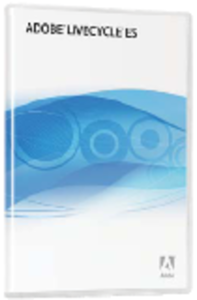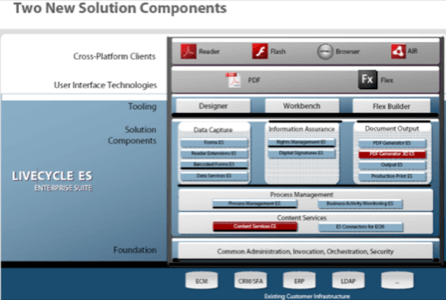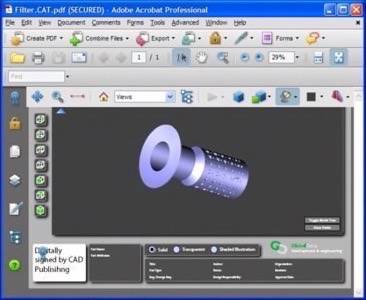Now offers 3D PDFs and an Enterprise Content Management system out of the box.
In the Web 2.0 world, applications are simplified and easy for everyone to use. Few people need training on how to sign up for Facebook or how to Digg an article. However, set one foot outside the consumer-friendly land of social media, and it’s like a time warp. When dealing with real-world businesses, especially if doing so online, you’ll often have the experience of encountering long, cumbersome forms and non-intuitive processes that are so tedious that you just want to close the browser and pick up a phone.

This isn’t a good experience for you, nor is it a good one for the company, either. They would much rather have automated forms sent in, but the problem they have is finding a way to get you to use them. A product from Adobe called LiveCycle ES can help.
About LiveCycle
The LiveCyle Enterprise Suite (ES) is a solution designed for developers which makes it easier for them to build those user-friendly forms that bring a little Web 2.0 to the less exciting (but arguably more important) things you do online – things like filling out forms for your bank or insurance company, for example.
Today, Adobe is expanding their LiveCyle suite to include even more features.
SharePoint Killer? Adobe Does A Content Management System
The new suite, LiveCycle ES Update 1, will add Adobe LiveCycle Content Services ES, a content services solution based on an embedded version of the open source Alfresco ECM. (An ECM, or Enterprise Content Management system is any solution that allows you to capture, manage, store, preserve, and deliver documents within the enterprise.) This component includes content storage, versioning, check-in/check-out, collaboration, advanced classifications, search, archival, and a variety of UIs, and Microsoft Office plug-ins and shared network folders.

More recently, you’ve seen Oracle and Microsoft enter the ECM arena with their Oracle Content Management product and SharePoint products, respectively. These two solutions offer basic ECM functionality that work for most businesses, but are not necessarily the sort of large-scale ECM solutions deployed in the enterprise like IBM’s FileNet, DB2 Content Manager, or EMC Documentum. Where before, LiveCycle would only connect to standard ECM systems like those from IBM and EMC, now Adobe is offering a solution right out of the box. With LiveCycle Content Service ES, developers can build applications where content can be created, stored, searched, protected, managed, and archived.
To help you better understand how Adobe LiveCycle fits in with other pieces of their platform, this chart shows the different products and services and how they connect: (You can see a larger version of this chart here):

3D PDFs
Another new feature the LiveCyle Update is the LiveCycle PDF Generator 3D ES. Despite its somewhat cumbersome name, this feature is actually pretty cool. Again, Adobe shows they’re smartly using the technologies acquired from Macromedia, this time to integrate 2D/3D design data into PDFs. LiveCycle will actually be able to convert all the major CAD formats (and other standard file formats) into PDFs which anyone can then view right from within the free Adobe Reader.

Solution Accelerators
To leverage the tools offered by LiveCycle, Adobe will also be launching “Solution Accelerators.” These consist of deployable code, best practice templates, and documentation to help companies build solutions with LiveCycle around common uses of the technology. These will be made available from the Adobe Developer Center.
Conclusion
LiveCycle is the kind of product that can be hard for the end user or consumer to understand, but the next time you’re filling out a long, complex form and wishing there was an easier way, you may understand what LiveCycle is trying to do for you. The beauty of LiveCycle isn’t just for the consumer though – the business benefits, too.
Update 1 will be made available on July 17th. The Solution Accelerators will follow shortly after.










